Circuit breakers or, in short, automata are installed in apartment shields and protect electrical appliances from network overloads and currents short circuit, shutting down the lines they control when the voltage rises to a dangerous level for a certain amount of time. Kettle, iron and microwave do not require a separate outlet for themselves and, therefore, the installation of machines. However, for washing machines and dishwashers, water heaters and electric stoves, it will be better to stretch from electrical panel separate lines by protecting the wiring with circuit breakers.
To choose a circuit breaker you need to know:
- Rated current of the machine.
- Circuit breaker trip type.
- Circuit breaker short circuit current.
To determine rated current circuit breaker, some calculations need to be made. This will require the rated power of the connected equipment, which can be found in technical passport, and the section of the outlet cable where this equipment will be connected. Based on the power in the passport, we calculate the current consumption:
I p consumed current, A; P n rated power of connected equipment, kW; U c network voltage, 0.22 kV.
- 1.25 - for a large socket household appliances- our case;
- 1.1 - for normal household socket;
- 1 - for the lighting line.
Having counted the current, you can proceed to the selection of the circuit breaker for current. The choice lies in observing the inequality:
where I n - rated current of the circuit breaker; the nearest greater to I n * is selected from the range: 6, 10, 13, 16, 20, 25, 32, 40, 50, 63 A.
In this case, it is necessary to take into account the cross section of the socket cable:
So, for example, for a three-core cable with a cross section of 4 mm 2, you need an automatic machine with a rated current of at least 32 A.
Thus, you can choose the automatic current.
Circuit Breaker Trip Types
Trip type, which is also a type of machine, is the current at which the circuit breaker operates, de-energizing its line, and the time after which it does this.
The tripping current is higher than the rated current of the circuit breaker - current normal operation, several times. This is done so that the machine does not turn off every time with a small short-term increase in voltage in the network, otherwise in real conditions, even with small overloads, the line would immediately turn off.
Also, the disconnection time - for short-term small overloads, it makes no sense to disconnect the electrical receiver from the power supply. On the other hand, if overvoltage lasts for a relatively long time, threatening to ruin the equipment, the cable must be de-energized.
The type of release just determines at what values of the overload current and for what time the circuit breaker should operate - this is the so-called. time-current characteristic of the circuit breaker.
There are switches of the following types: A, B, C, D, K, Z, MA, but usually only types B, C and D are used in everyday life.
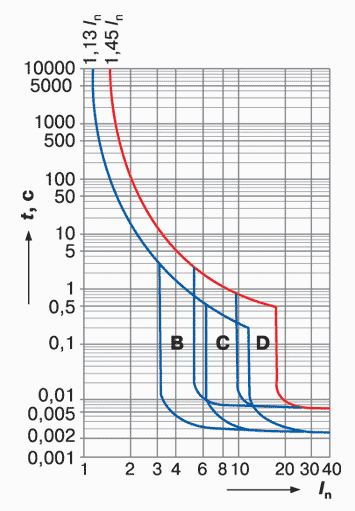
Time-current characteristic
Manufacturers usually provide a selection table in their catalogs. circuit breakers. It could, for example, look like the one shown in the table Type of instantaneous trip B.
Marking of circuit breakers
Each machine must be marked with technical specifications device.
Probably, it is not worth reminding that overloads occur in modern electrical networks, which negatively affect the networks themselves. Therefore, for protection, automatic switches are installed, or as they are called in everyday life - automatic machines. It is they who turn off the power supply to the network if an overload occurs in it. But here another question arises regarding the parameters of these automata, where two main ones stand out: the current ratings of the circuit breakers and the time-current characteristic. Let's take a look at these figures.
Current ratings of machines
Let's start with the fact that all the characteristics of circuit breakers are located on their body. Therefore, finding them is not a problem. As for the rated current of the machine, electricians consider it the main characteristic. In fact, this is the maximum value of the current that the machine can withstand without turning off the supply electrical network. As soon as the actual current strength exceeds the nominal one, the machine will work and turn off the circuit.
It should be noted right away that the ratings of circuit breakers are standardized, that is, they have certain digital values. Here is the standard range: 6, 10, 16, 20, 25, 32, 40, 50, 63, 80, 100 A. Some European manufacturers produce devices with a rating of 125 amperes.
Attention! All these values are necessarily indicated on the case of the machine itself, and they are valid at a temperature environment equal to +30C. It just so happened.
It is the operating temperature that affects the current load of the machine. And the higher the temperature in this case, the lower the current load this protective device can withstand. There is another point that determines the way the machines are installed. Usually in switchboard they are installed to each other, pressed tightly. Each circuit breaker generates heat during operation, because electricity passes through it. Therefore, each device acts on the neighboring one, increasing the temperature of the latter. At the same time, the larger the device in terms of current rating, the more it releases thermal energy.
It should be noted that many manufacturers of circuit breakers in their product catalogs necessarily indicate correction factors with which you can correctly calculate the current rating depending on the ambient temperature. This makes it easier to make the right choice.
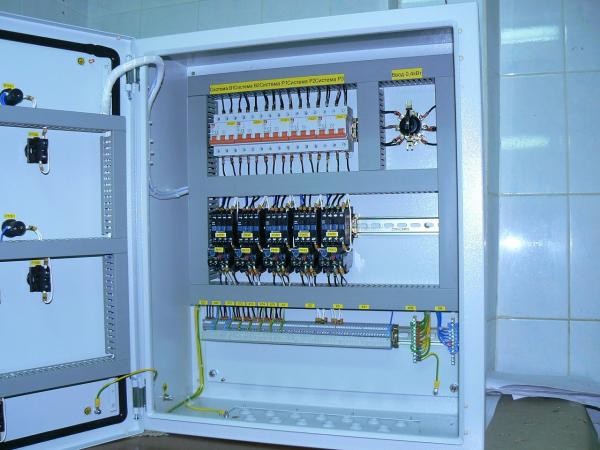
And that is not all. Some household appliances, when turned on, emit a so-called starting current. It is usually five to six times more than the nominal one, which again will affect the increase in the load in the supply network. True, such currents are short-term and they have no effect on the cable, but the machine can react to them. True, everything will depend on the second characteristic of this device - time-current.
What does this physical indicator mean? In principle, everything is quite simple. When the network is congested, especially when the load depends on starting torque household appliance, the machine switches off. But since this load is short-term, sometimes there is no need to turn off the mains. It turns out that the machine allows the device to turn on, and at the same time it does not turn off the power supply to the electrical wiring of the building.
But there is one caveat. How long does it take for a household appliance to enter normal operation, how quickly does it turn on? That is, how long will the starting current last? It is the time indicator that is laid down in this characteristic of the circuit breaker. This creates conditions under which the shutdown of the machine will be reduced.
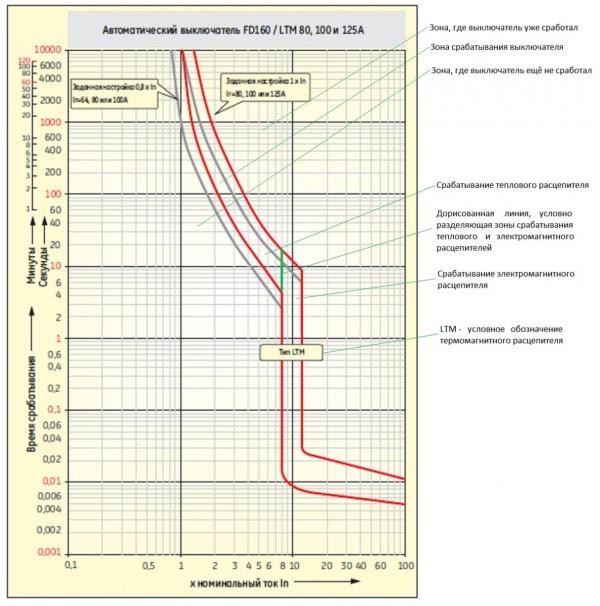
There are several machines with different time-current loads.
- Type-A. This device is used in linear networks in which the length of the electrical wiring is very long, or where semiconductor devices are installed. Withstands overload by 2-3 times.
- Type-B Usually installed in a network with an active load and a small multiplicity of the starting current torque. Typically, such machines are used in areas where lighting, stoves, heaters, and so on are installed. Overload is 3-5 rated loads.
- Type-C. Mounted in a network with moderate current loads. These are usually outlet groups where air conditioners and refrigerators are connected. Withstands 5-10 times the nominal value.
- Type-D. It is used in circuits where units with high starting current are installed. It can be compressors, pumps, small machines. The excess is 10-20 denominations.
- Type-K. used in electrical circuits With inductive loads. Excess: 8-12.
- Type-Z. Such machines are installed in circuits in which electronic devices are connected. They are sensitive to overcurrents.
If we talk about domestic use, then most often types “B” and “C” are installed in electrical wiring, rarely “D”.
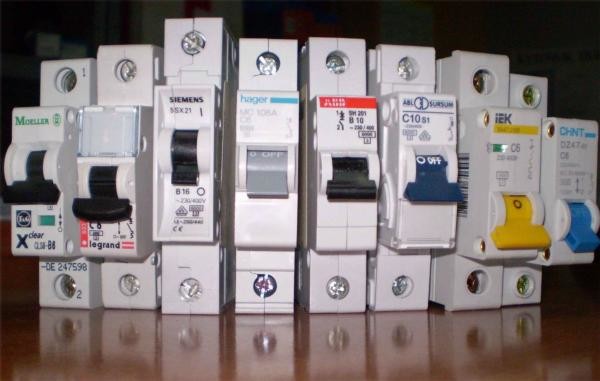
So, how to determine both characteristics on the circuit breaker itself? Usually on the case you can find such a designation: “C16” or any other, the main thing is that it be a letter of the Latin alphabet and a number. This indicates (in this case) that the current rating of the circuit breaker is 16 amperes, and the time-current characteristic refers this device to type "C". That is, this machine will withstand a current of 80-160 amperes for some time. Typically, the response time of the machine is 0.1 seconds.
Calculation
How to calculate the rated current of a circuit breaker? Everything is quite simple. Let's look at such a calculation using the example of a socket group, where they connect Electric kettle power of 1.5 kW, a refrigerator with a power of 400 W and a dishwasher - 2.5 kW.
First of all, it is necessary to determine the total power of consumers, which is equal to 4.4 kW. Now we insert all the indicators into the formula of Ohm's law:
I = P / U = 4400: 220 = 20 A. An automatic machine with such a current load is present in our catalog, but it is necessary to take into account the conditions that were specified in the article above. That is, it is better to choose a circuit breaker with a large current rating. And it will be 25 amps.
Related posts:
Into any electrical circuit must include protective elements. The main thing is to choose the right parameters for their operation for a particular circuit. Let's get acquainted with the existing current ratings of one of the most common electrical / technical products - circuit breakers.
The categorization of circuit breakers by current is quite complicated. They differ in design, method of installation and connection, type of release and a number of other parameters. More detailed information on circuit breakers can be found in the following documents: GOST No. R 50031 (30.2) of 1999 and No. R 50345 of 2010, PUE.
Varieties of circuit breakers
Mini slot machines
Such devices are used in low-current circuits and, with rare exceptions, are unregulated. They are characterized by a cut-off current (A) within 4.5 - 15). As a rule, such circuit breakers are used to protect electrical wiring in residential, administrative, warehouse buildings. That is, where the load on the line is not so significant (lighting, simple household appliances).
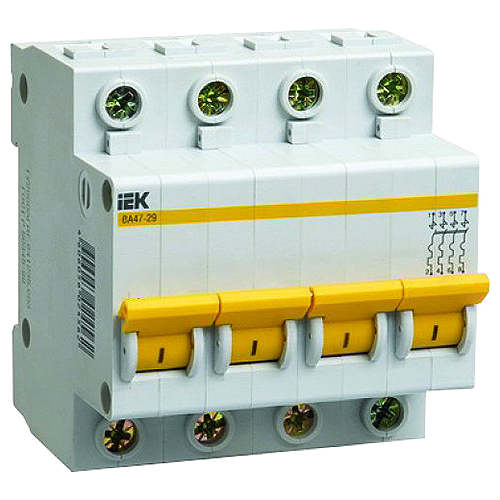
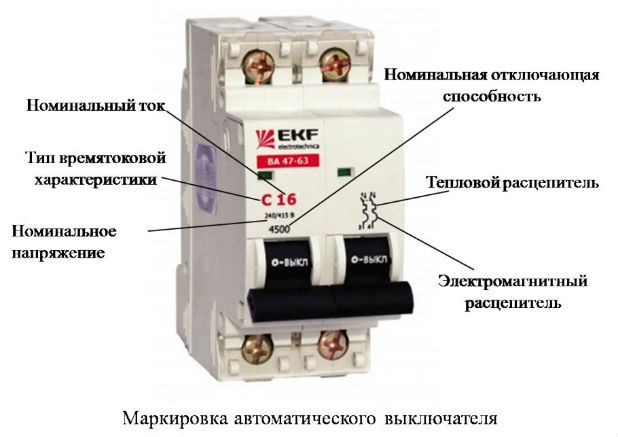
Group automata
They are designed for a higher operating current (up to 125), and are used to protect not individual "threads", but several devices connected to one phase.
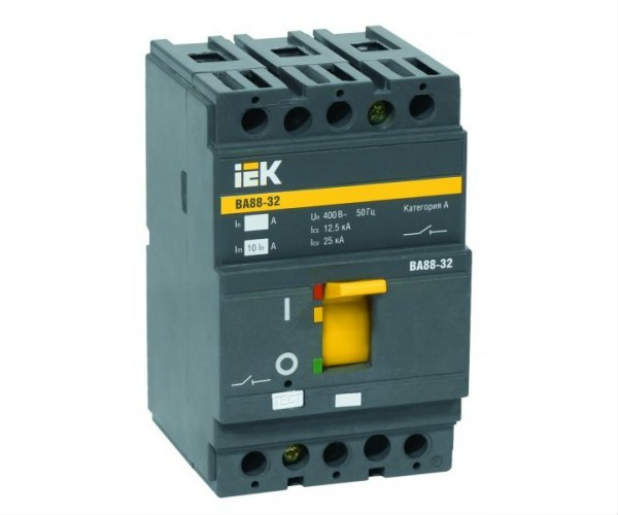
Air assault rifles
These are mainly multi-band models of circuit breakers (for simultaneous protection of up to 4 lines), and their operating current is much higher (limit - 6,500 A). They are installed in the power supply circuit of powerful consumers. One of their significant advantages is the ability to change the parameters, that is, to adjust the operating current, in accordance with the specifics of the circuit and the operating features of the circuit breaker.
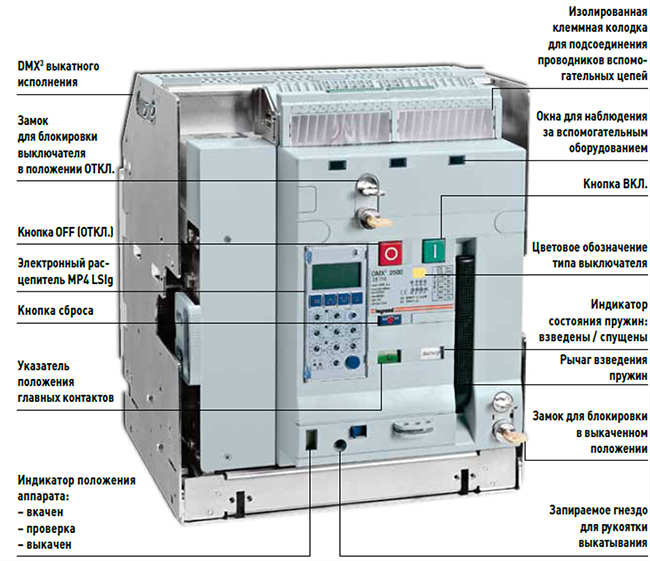
The range of circuit breakers is quite extensive, so it is unrealistic to list the values \u200b\u200bof all current ratings for each type of product. The tables below partially solve the problem of choosing the best option.
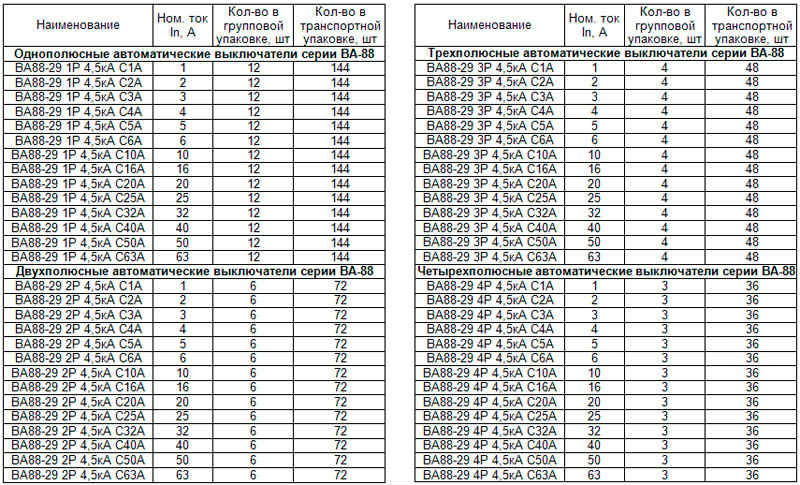
The engineering solution directly affects the current accuracy of the circuit breaker. In this regard, electromagnetic ABs are preferable.
The product rating should be selected individually for each scheme. The opinion of inexperienced "masters" that the more the better is wrong. This can cause both , and the connected installation (appliance) to smoke, and the circuit breaker will not work. The reason is the wrong choice of current characteristic.
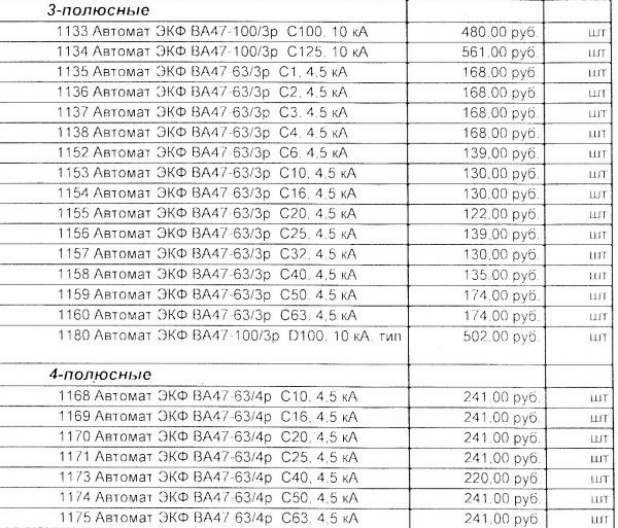
How to calculate the required current rating of circuit breakers
Though it's about chains alternating current, you can apply Ohm's law for a constant (I=P/U). The voltage is known - ~ 220 V. It remains only to determine the total power of all consumers included in the circuit and convert the resulting value to W. The quotient of the division is the rated current. To avoid false operation of the machine, its cut-off current is taken slightly higher than the calculated value.
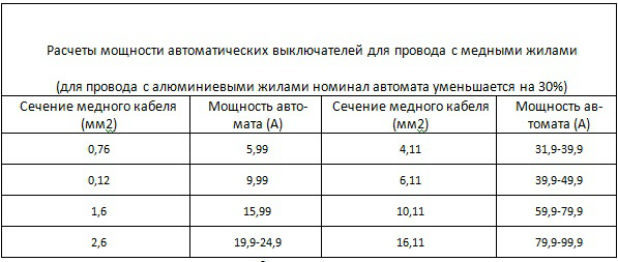
For example, if the total power turned out to be 8.8 kW (8,800 W), then a circuit breaker of 10 A or 16 is selected. Here you need to take into account both the type of wires and the presence of others protective devices(RCD, DIF automatic). A small increase in value is allowed.
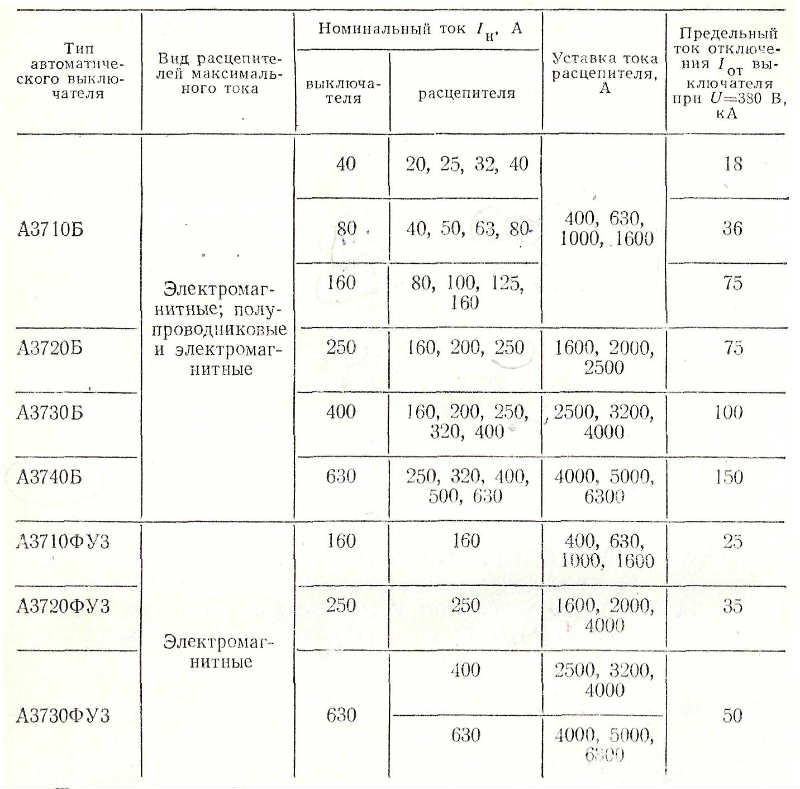
If the scheme provides for the installation of several circuit breakers, then it is advisable to purchase products from one manufacturer.





